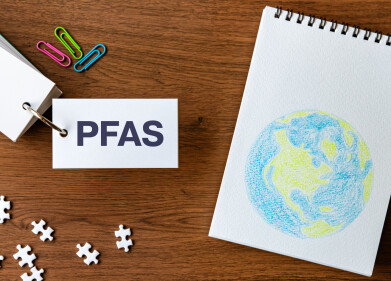HPLC, UHPLC
Are Your Coffee Beans Safe? - Chromatography Checks for Mycotoxins
Jul 23 2020
Coffee is one of the most consumed hot beverages in the world, every high street in the UK seems to have several dozen coffee shops. In fact, they are one of the last success stories of the British high street as online shopping decimates town centres. The value to the UK economy is significant too – with over 200,000 jobs related to coffee sales in the UK and a contribution to UK GDP of around £9 billion.
Brazil is the largest exporter of coffee, shipping almost 6 billion pounds of coffee abroad every year. A recent report in has discussed how Brazilian researchers have standardized a chromatographic method to detect and quantify a mycotoxin known as ochratoxin A that can be found in green coffee beans. This toxin can be fatal to both humans and animals.
Brazil – coffee, nuts, and football
It is not just nuts and football that Brazil is famous for. Brazil has been the world’s largest coffee exporter for over 150 years. It supplied close to 80% of the world’s coffee in the 1920s, but that figure has fallen, and it now produces around one-third of the coffee exported around the globe. This is followed closely by Vietnam and Colombia. It is thought that coffee arrived in Brazil in 1727 from French Guiana. It was found that Brazil’s climate, soil, and geography were ideal for growing coffee.
Food producers nowadays must produce food that is not only good tasting, but meets the consumers requirements visually, aroma wise and texture. And increasingly, producers must make sure food is safe and is free from chemical and microbiological contamination. Food contamination by fungi can cause major economic losses and a waste of materials. Fungi can also produce mycotoxins that can pose a serious risk to humans and animals if consumed.
Fungi and mycotoxins – not in my brew thank you
Fungi can produce mycotoxins when the plant is growing, or when the foodstuff is being stored or transported if the storage conditions are not satisfactory for that foodstuff. But even if the fungi that produce the mycotoxins are removed, the mycotoxins can sometimes remain as they have good thermal stability and are resistant to heat and drying processes. One mycotoxin that has been found on green coffee beans is ochratoxin A – but researchers have developed a chromatography method to check coffee beans and keep our brews safe.
To develop the method, the team stored green coffee beans for two years in unfavourable conditions. The beans were then ground and ochratoxin A extracted using a methanol/sodium bicarbonate solution. The mycotoxin was then quantified using high performance liquid chromatography with a fluorescence detector. The use of HPLC to quantify samples is discussed in the article, The Detection and Quantification of Dicamba and Acid Herbicides in Agricultural Samples. The method developed was determined to be efficient, robust, and reproducible and the coffee samples were clear of ochratoxin A.
Chromatography, helping keep your brew safe.
Events
Mar 18 2025 Beijing, China
Mar 25 2025 Paris, France
Mar 31 2025 Beijing, China
Apr 02 2025 Saigon, Vietnam
Apr 22 2025 Kintex, South Korea















